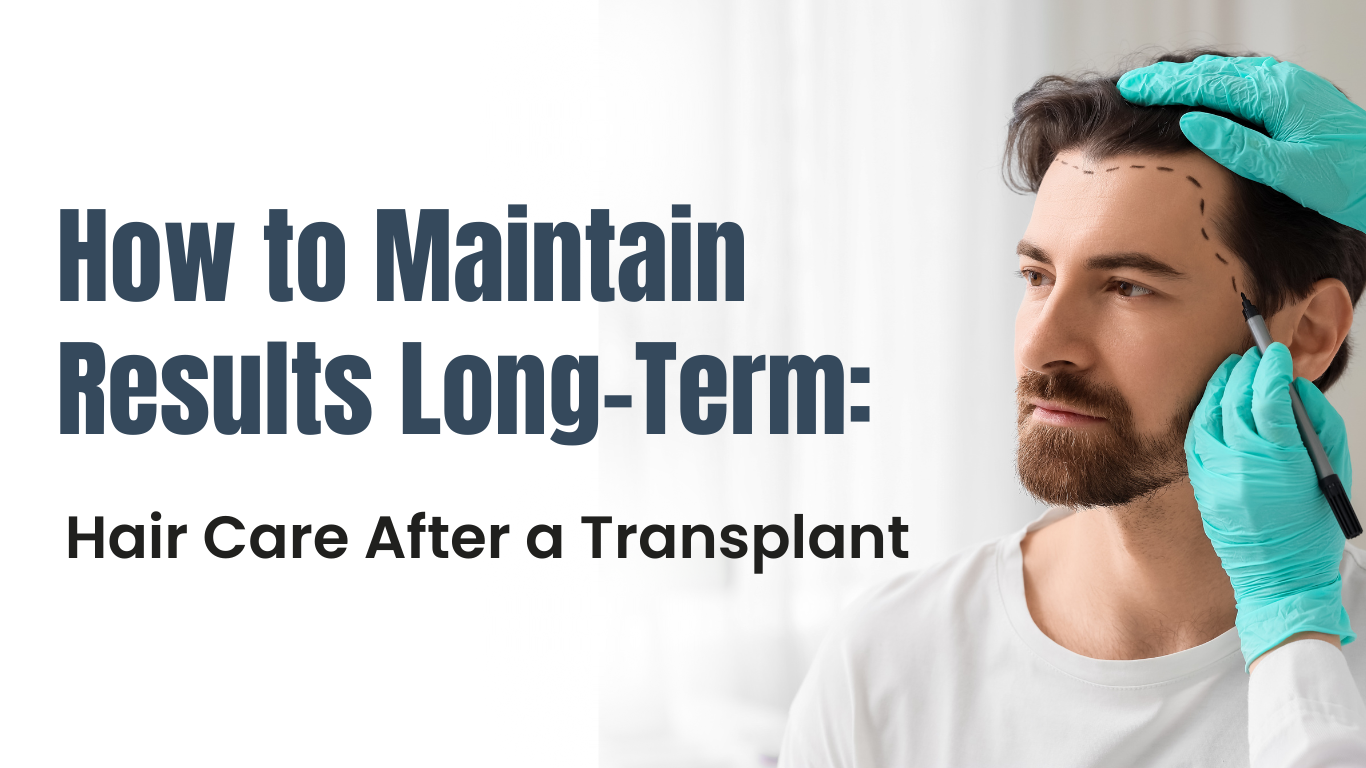Introduction
A hair transplant can restore your confidence, but lasting results depend on how you care for your new hair and scalp. Many patients assume once the procedure is done, their work is over. In reality, long-term success relies on proper aftercare, healthy habits, and regular check-ups.
In this guide, you’ll learn how to maintain your hair transplant results for years to come, with clear, practical advice on daily care, medical follow-up, and lifestyle choices.
What Is Long-Term Hair Care After a Transplant?
Long-term hair care after a transplant means adopting habits and treatments that protect your grafts, nourish your scalp, and support natural growth.
The transplanted follicles are usually resistant to the hormone (DHT) that causes male and female pattern baldness. However, your natural, non-transplanted hair can still thin over time. That’s why maintaining results involves both gentle care and ongoing medical supervision at trusted clinics like Haris Hair Transplant.
Why It Matters
Proper hair care helps your transplanted follicles settle, grow, and blend naturally with your existing hair. Neglecting post-transplant maintenance can lead to slower growth, weaker strands, or further thinning in untreated areas.
A consistent routine also ensures your scalp stays healthy, minimises shedding, and supports overall hair density, giving you a fuller, more natural look that lasts.
How to Care for Your Hair After a Transplant
1. Follow Immediate Post-Transplant Care
First few days:
- Avoid touching, scratching, or rubbing the transplanted area.
- Sleep with your head elevated to reduce swelling.
- Wash your hair only when your surgeon instructs you to, usually after three days, using a mild shampoo provided by your clinic.
First week:
- Gently wash with warm water, never hot.
- Use a soft towel to carefully pat the area dry without rubbing.
- Avoid exercise and sweating for about two weeks.
- If you wear a hat, choose a loose one that won’t press on your scalp.
Weeks two and beyond:
- Avoid strenuous activity for at least a month.
- Wait at least three weeks before swimming.
- Skip hair dyes and styling tools for six months.
- Avoid alcohol and smoking for at least two weeks, as both slow healing.
2. Build a Healthy Hair Care Routine
- Gentle washing: Use a pH-balanced, sulphate-free shampoo to prevent irritation.
- Brushing: Use a wide-tooth comb or soft-bristle brush. Avoid pulling on the hair.
- Styling: Limit heat styling tools. Always use a heat protectant spray if necessary.
- Scalp health: Keep your scalp hydrated with light, natural oils such as argan or coconut oil. Gentle massages improve blood circulation and follicle health.
- Avoid harsh chemicals: Postpone hair colouring, perming, or chemical treatments for at least six months, and choose ammonia-free products when you do.
3. Maintain Medical and Professional Follow-Up
- Medications: Your surgeon may prescribe finasteride (oral) or minoxidil (topical) to preserve existing hair and slow future loss.
- Check-ups: Attend follow-up appointments, typically at 3, 6, and 12 months, then yearly. These visits allow your surgeon to assess growth and guide further care.
- Supplemental therapies: Treatments like Platelet-Rich Plasma (PRP) or low-level laser therapy can help stimulate follicles and strengthen existing hair.
4. Support Hair Growth Through Lifestyle
- Balanced diet: Eat foods rich in protein, iron, zinc, omega-3, and vitamins A, C, D, E, and B (especially biotin).
- Stay hydrated: Drink plenty of water to support scalp circulation.
- Avoid smoking and alcohol: Both restrict blood flow and reduce nutrient delivery to follicles.
- Manage stress: Chronic stress can cause shedding. Incorporate yoga, meditation, or daily walks.
- Protect from sun: Cover your scalp with a hat or use SPF-based scalp sunscreen when outdoors.
- Sleep well: Quality sleep supports cellular repair and hair growth.
Common Questions and Mistakes
Q. How long until I see full results?
A: Hair growth usually becomes visible after three to four months, with full results appearing after 12 to 18 months.
Q. Can I use regular shampoo and conditioner?
A: Use only mild, doctor-approved products for at least the first few months to prevent irritation.
Q. Should I take vitamins or supplements?
A: Only take supplements your surgeon recommends. Excessive vitamins can sometimes cause imbalances.
Common mistakes to avoid:
- Using harsh shampoos too soon.
- Ignoring follow-up appointments.
- Over-styling or using heat tools early on.
- Expecting instant results hair growth takes time.
Conclusion
Maintaining your hair transplant results is an ongoing process. By following medical advice, caring for your scalp gently, and living a healthy lifestyle, you’ll protect your investment and enjoy lasting, natural-looking hair.
For those considering procedures like FUE or FUT, consistent care today means confident results tomorrow.
